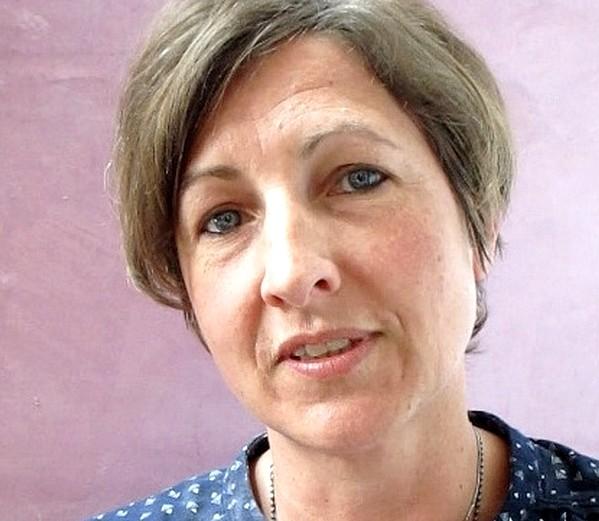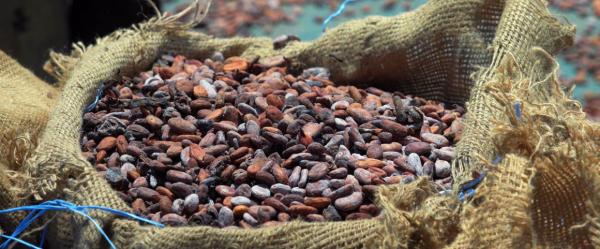Expert view 30 September 2025
- Home
- CIRAD news
- News
- Marisa Peyre stopping disease emergence
Marisa Peyre: "Emerging diseases must be nipped in the bud right away"

The white paper and policy brief make recommendations as to how we could reduce the risks of diseases spreading from wildlife to humans. What do you see as the main lever?
Marisa Peyre: Surveillance is our main weapon in the fight against emerging diseases. And surveillance means a whole network of stakeholders. Players involved in animal health, human health and environmental health, including local communities, local authorities and private players, all have a part to play. Effective surveillance means effective exchanges of information. Sampling and testing are also vital, but they are not enough.
Emerging diseases must be nipped in the bud right away. If an unusual infection is seen in humans, as was the case with the Sars-CoV-2 coronavirus in China last December, doctors must declare it immediately. They must also communicate rapidly with players in other sectors, such as veterinarians, who may know about suspicious events observed in animals or on markets, as with the current pandemic. Such actions can help in identifying new diseases or making appropriate decisions, such as whether to isolate one person or a group of people, or to close markets. Access to and rapid sharing of information on the first case of transmission from animals to humans or between humans are vital. Any time lost only encourages the spread of the disease.
The Sustainable Wildlife Management (SWM) programme covers topics such as wildlife management, trade and consumption. What action is required in this respect?
M.P.: For many communities, particularly in developing tropical countries, eating wildmeat is more a matter of survival than a luxury. Wildlife rearing has progressed significantly, for medicinal purposes or to satisfy consumer taste. We now know that increased pressure on wildlife means increased risks of disease transmission. Does that mean banning wildmeat sales? That would have a major impact on local food security, national economies and cultural identity. It would make the issue one of legality or illegality. The result would be a lack of visibility and control, which would prevent surveillance and inevitably trigger increased risks. In Asia, during the 2003 avian influenza crisis, banning live poultry markets increased the human health risks by making checks impossible. In sub-Saharan Africa, no less than 80% of food is sold on informal markets, making surveillance a complex task.
To reduce the risks of transmission, the various sectors - animal health, human health and environment specialists - must work together in a coordinated, pragmatic fashion, as per the "One Health" approach. This must be done locally, hand in hand with local people. This is the only way of ensuring early detection and rapid initial action.
Have you already tried this sort of participatory surveillance?
M.P.: We have launched participatory training sessions for local players, notably in the animal health field, associating doctors and environmental managers. Every type of player must be capable of understanding and assessing the role, constraints and objectives of all the others. That knowledge and awareness of others is the only way of ensuring we can work together to act quickly in the event of a crisis. Local communities must be involved in building strategies. In Zimbabwe, for instance, during the training sessions, we acted out the case of a dog with rabies biting a child. Each participant played a role. They played out what they would do – surveillance, transmission of information to the national authorities, feedback and action. They realised how slow the process was and are now thinking about how to make it more efficient. This type of training is not specific to developing tropical countries. It should, and is indeed beginning to be implemented in industrialized countries where the often stricter health policies are not respected by every category of player, for reasons that seem rational to them.
Is this realistic?
M.P.: It's our best option at the moment. And it works really well for animal health. Participatory surveillance for early detection works to stop epidemics on a local level. Veterinarians visit the site concerned and identify diseases before they spread. This is what has happened, for instance, with cases of avian influenza on poultry farms in Southeast Asia. Participatory surveillance also served to eradicate rinderpest in 2011, by identifying the very last clusters in remote areas of Africa. It has also worked in the field of human health, for Ebola, in some regions.
However, participatory surveillance, combined with risk analysis, must be sustained. It is pointless if it remains a one-off. Overcoming this requires global funding, although that alone is not sufficient: these activities must be written into State budget plans, and thought should be given to building partnerships with the private sector to ensure long-term action.
In 2003, when avian influenza emerged, the countries where the epidemic originated (Vietnam, Cambodia, etc) introduced a pandemic management plan in at-risk zones. Those same countries were the ones that handled things best right from the start of the Covid-19 crisis. Certain steps are not difficult to put in place: the halting of flights out of the first country to be contaminated, for instance, was decided by the private sector (airlines) to protect the health of their employees. The decision could have been a political one.
We will have to compare the economic impact of the current crisis with the cost of introducing and maintaining a collaborative, coordinated emerging disease surveillance system. In the end, it's a question of cost:benefit analysis, taking account of the social and economic aspects of prevention measures in relation to the impact of emerging diseases.



























